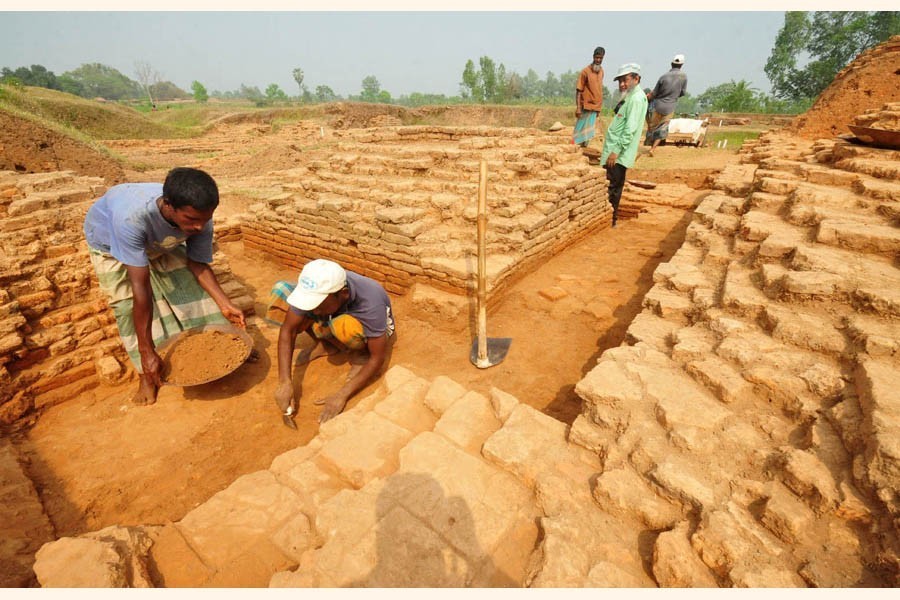The frenzy with which the unscrupulous people and syndicates, many with indirect backing of the local administration, continue to swoop on the historical places is distressing. There are few archaeological sites in the country which are not the hawkish targets of these elements. Almost all of the targets of swoops prove to be driven by the ultimate urge to grab lands or structures. They range from centuries-old temples, mosques, local kings' palaces or graves. To the shame of the nation, it was the British colonialist administrators and individuals who were found employing their utmost efforts to save many of the ruins in Bangladesh. Ironically, the key-figures of the independent Bangladesh administrations bothered little for the necessity to conserve the country's invaluable ruins and relics. Over the last four decades, the attempts to raze countlessheritage sites to the ground went on without respite. There are few countries in the world which treat their historical ruins in such a nonchalant way.
The way Bangladesh continues to level both its archaeological and architectural sites can be termed atrocious. Hardly does a month pass in the country which doesn't see the demolition of a structure carrying historical importance. Apart from single buildings dating back to the Sultanate, Mughal and British periods, vast areas reminding of the earlier kingdoms and rules have long disappeared. Only a handful of the Mughal area structures remain in place in Dhaka today. The irony is, this 4-hundred-year-old city once served as the Mughal capital of the Bengal 'Subeh'. Except the spacious Lalbagh Fort and the 17th century landmark buildings built in the Mughal era --- the BoroKatra and the ChotoKatra in the present Chawk Bazar --- few structures from that period stand with their past glory. Instead, a section of influential people are always on the hunt for opportunities to take possession of them. Of late, the part demolition of the BoroKatrabears witness to the grabbers' attempt to overrun this structure, inseparable from Dhaka's Mughal past. News of any attempt on the part of the government's department concerned to save the building has yet to be known. The conservation activists fear, since encroachers have targeted the two 'katras', their days are evidently numbered.
Already, dozens of spectacular British era residences and offices, business centres etc after Mughal times have disappeared around 100 years ago.Many of these British installations were built on the model of Greco-Roman architectural style. However, the existence of the ornate and imposing structures belonging to the Dhaka's Armenian business community remains a mystery. Dhaka experts attribute the functional condition of these over-hundred-year-old palatial buildings to the urge of the later business tycoons in old Dhaka. A painful aspect associated with the conservation of heritage sites is the neglect on the part of the authorities. There are fears that if timely repair and renovation initiatives aren't forthcoming, the Armenian business centres and the church may face the fate of many dilapidated British-made structures. At this point the instance which flashes in the mind is that of the Buckland Bund along the Buriganga River. It served the Dhaka residents as a quiet and breezy promenade constructed in 1864, by the city's British commissioner Charles Buckland.
Leave alone the younger generation, people in their seventies even cannot clearly remember seeing any remnants of the Buckland Bund in their boyhood. Instances of proud presence of architectural wonders from the distant past, and their eventual disappearance later, remain omnipresent throughout the country. The demand of modernisation, and the greed of land grabbers have stood as a hindrance to the survival of these sites. Few have any compunction for this national trend.


